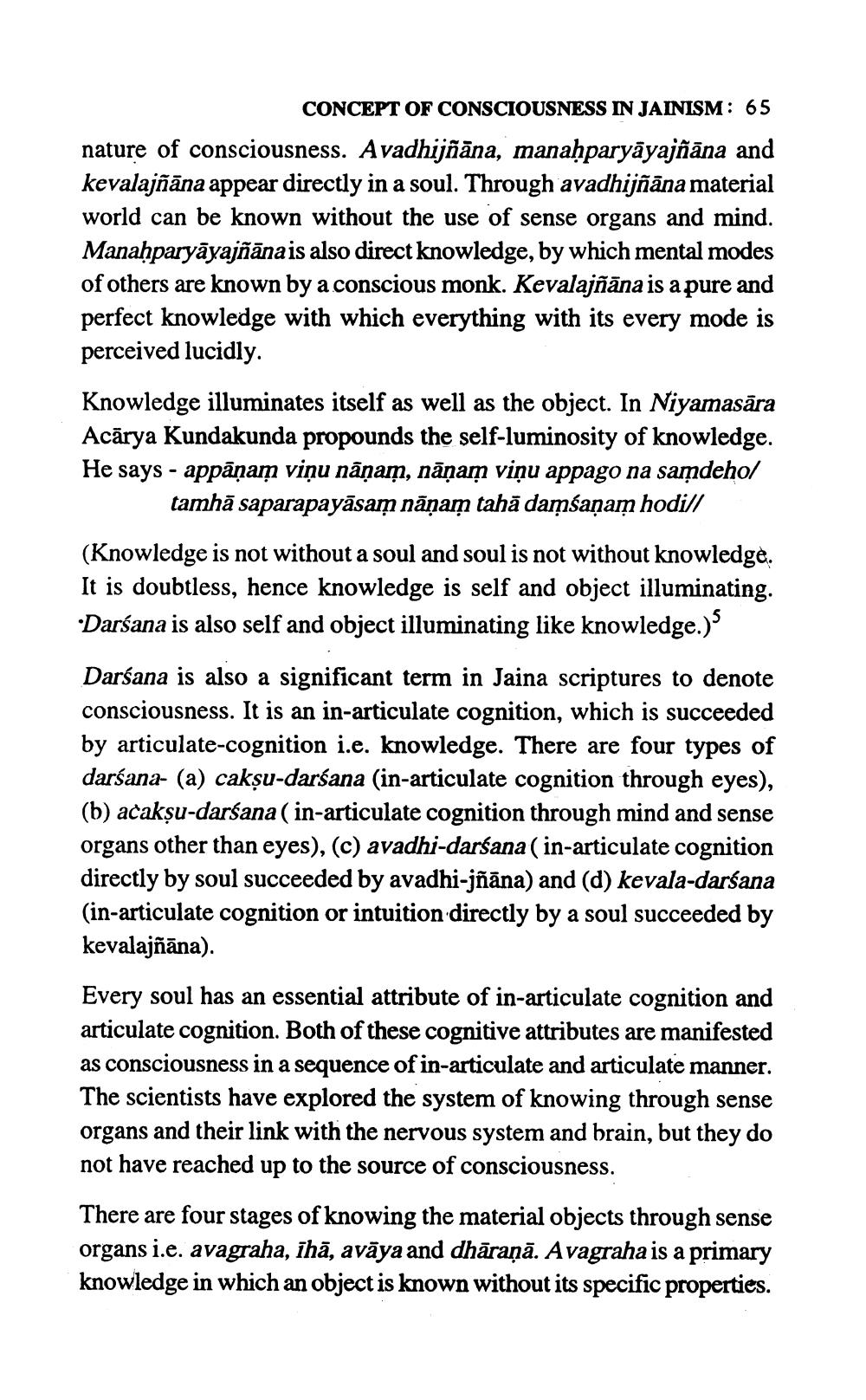________________
CONCEPT OF CONSCIOUSNESS IN JAINISM: 65 nature of consciousness. Avadhijñāna, manaḥparyāyajñāna and kevalajñāna appear directly in a soul. Through avadhijñāna material world can be known without the use of sense organs and mind. Manahparyāyajñānais also direct knowledge, by which mental modes of others are known by a conscious monk. Kevalajñāna is a pure and perfect knowledge with which everything with its every mode is perceived lucidly. Knowledge illuminates itself as well as the object. In Niyamasāra Acārya Kundakunda propounds the self-luminosity of knowledge. He says - appāņam viņu nāņam, nāņam viņu appago na sasdeho/
tamhā saparapayāsas nāņam tahā daņsaņam hodi// (Knowledge is not without a soul and soul is not without knowledge. It is doubtless, hence knowledge is self and object illuminating. •Darśana is also self and object illuminating like knowledge.)
Darśana is also a significant term in Jaina scriptures to denote consciousness. It is an in-articulate cognition, which is succeeded by articulate-cognition i.e. knowledge. There are four types of darśana- (a) cakṣu-darśana (in-articulate cognition through eyes), (b) acakşu-darśana ( in-articulate cognition through mind and sense organs other than eyes), (c) avadhi-darśana( in-articulate cognition directly by soul succeeded by avadhi-jñāna) and (d) kevala-darśana (in-articulate cognition or intuition directly by a soul succeeded by kevalajñāna).
Every soul has an essential attribute of in-articulate cognition and articulate cognition. Both of these cognitive attributes are manifested as consciousness in a sequence of in-articulate and articulate manner. The scientists have explored the system of knowing through sense organs and their link with the nervous system and brain, but they do not have reached up to the source of consciousness. There are four stages of knowing the material objects through sense organs i.e. avagraha, ihā, avāya and dhāraņā. Avagraha is a primary knowledge in which an object is known without its specific properties.




